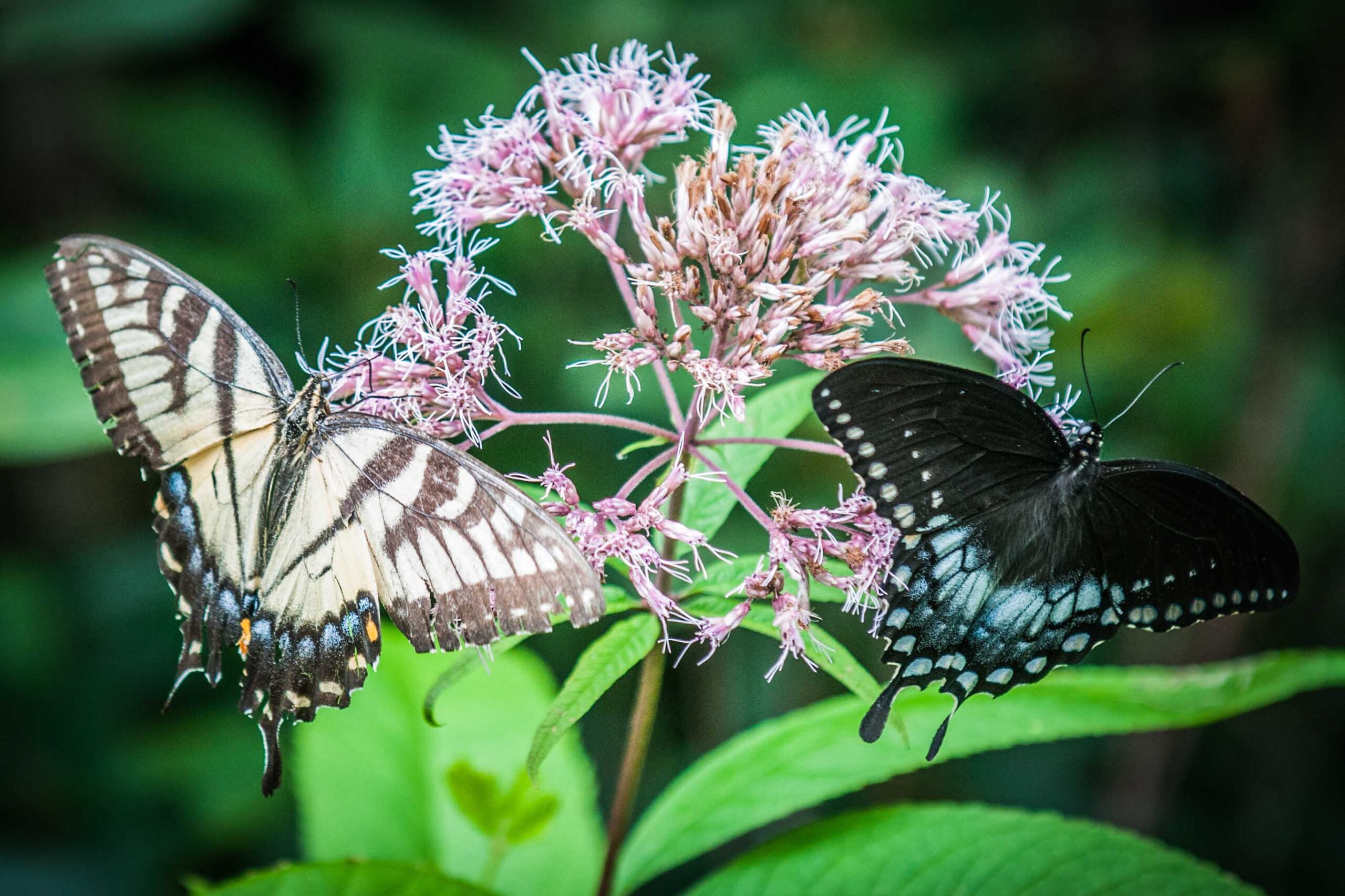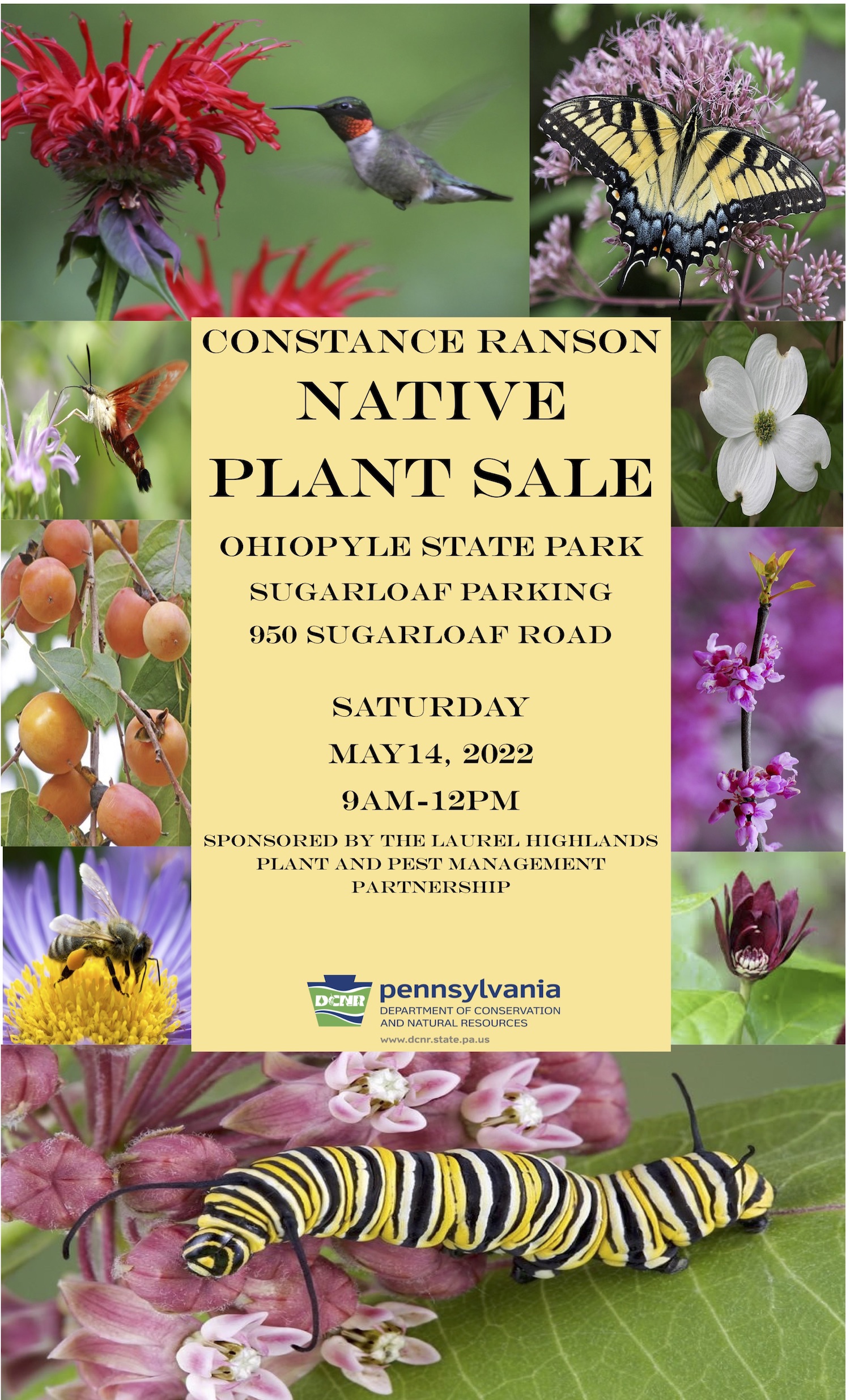Invasive Species
What is an invasive species?
Federal Executive Order 13112 describes an invasive species as “an alien species whose introduction does or is likely to cause economic or environmental harm or harm to human health.” Invasive species come in many forms including plants, animals, insects and even diseases. You can find invasive species living in water as well as on land. While invasive species may seem to be very different from each other, they all share something insidious in common. They can easily establish themselves outside of their native ranges and vigorously outcompete our native species for space and resources effectively disrupting and damaging our native ecosystems.
Why are invasive species a problem?
Invasive species are a problem because they directly threaten our native environments and can adversely impact Pennsylvania’s economy and the health of our citizens. When plants like Multiflora Rose, Japanese Honeysuckle, Japanese Knotweed and Burning Bush (just to name a few) are planted, they frequently escape from the area they were intended to stay (cultivated area) and spread rapidly to surrounding areas. Unchecked, invasive plant species displace our native plants and degrade habitat for native animals and insects. Many of Pennsylvania’s rare, endangered and threatened native species are at direct risk of elimination from invasive species.
Every year Pennsylvania spends millions of dollars fighting invasive species. According to the Pennsylvania Invasive Species Management Plan developed by the Pennsylvania Invasive Species Council, Pennsylvania has spent $4.5 million dollars since 1999 to protect the Commonwealth’s stonefruit industry by engaging in efforts to eradicate the plum pox virus. Additionally, since 2000, Pennsylvania has spent more than $39 million to protect the health of Commonwealth citizens from West Nile Virus.
Due to the prevalence of global trade and travel, there is every indication to believe that our invasive species problems will continue to grow.
Where do invasive species come from?
Although some invasive species can travel to new locations via wind or water or extreme weather, most new introductions of invasive species are the result of human activity.
The expansion of global trade and travel has facilitated the movement of invasive species around the globe through contaminated products like food or produce that may contain undetected organisms or pathogens, through hitching a ride on our modes of transportation like attaching to the hulls of ships or through the release of ballast water, through intentional release of exotic pets, plants or organisms into the wild, through hobby trading at flea markets or online, through movement of soils or other materials like firewood from one location to the next, in packing materials for products, etc.
What can I do to help?
The first step to help eliminate invasive species is to refrain from purchasing them. A good example is to avoid using plants you know or suspect are invasive and start educating others about the threats of invasive species. You should also survey your property regularly for invasive plants, remove them properly before they spread and replace them with native plants.
Also, please consider becoming a member of a group that combats invasive species and volunteer your time for eradication and control efforts as well as education and outreach. One such local group working to control invasive species is the Southern Laurel Highlands Plant & Pest Management Partnership (SLHPPMP).
In 2007, an association of local, state and federal agencies as well as non-profits, private groups and individuals joined together to form SLHPPMP. SLHPPMP strives to work cooperatively to increase awareness of the impact of invasive species, to restore habitats and to promote our native species throughout the Southern Laurel Highlands.
At the heart of the SLHPPMP is a commitment to protect our native species by advocating invasive species control through education and outreach as well as project implementation. The group plans to accomplish these objectives by initially focusing their efforts within several of Fayette County’s most notable natural areas: Western Pennsylvania Conservancy’s Bear Run Nature Reserve and Fallingwater®, Fort Necessity National Battlefield & Friendship Hill National Historic Site, Ohiopyle State Park, State Gamelands and Forbes Forest. SLHPPMP is striving to control existing invasive species at each site and to limit the spread of invasive species from one natural area to the next. SLHPPMP is also reaching-out to adjacent landowners as well as anyone interested in helping to control invasive species.
SLHPPMP offers a volunteer based program known as Go Native! Project Weed Whack. Project Weed Whack is an annual series of hands-on field identification and eradication events that target a wide variety of invasive plant and pest species. The events often include free field guides or other hand-outs, free talks on interesting topics like the history of forests, free tours of local landmarks on the land we’re working to protect and other fun elements like boat trips.
SLHPPMP also offers native plants for sale at our Constance Ranson Native Plant Sale held annually at Ohiopyle State Park. We invite you to come out and Grow Native! by selecting beautiful native plants to fill your home landscape. Information on our native plant sale can be found in the link provided on this webpage. All proceeds support SLHPPMP’s efforts to restore native habitats and increase education and outreach on the value of our native species.
For more information about joining SLHPPMP, participating in a Project Weed Whack volunteer day, and/or for more details on our annual Grow Native! plant sale please contact:
Heather Fowler
Watershed Coordinator
heatherdfowler@yahoo.com
724.438.4497
Spotted Lanternfly Information
The Spotted Lanternfly is an invasive insect that has spread throughout Pennsylvania since its discovery in Berks County in 2014. SLF feeds on the plant sap of many different plants including grapevines, maples, black walnut, and other important plants in PA. Click below to learn more
Native Plants & Invasive Species
Click on a link below:
NATIVE PLANTS
Pennsylvania Department of Conservation & Natural Resources – Native Plants
Pennsylvania Native Plant Society
Wild Ones Western Pennsylvania Area Chapter
Native Replacements for Invasive Plants
INVASIVE PLANTS
Pennsylvania Department of Conservation & Natural Resources – Invasive Plants
Pennsylvania Controlled Plant & Noxious Weed List
United States Department of Agriculture – Noxious Weed List
Invasive Plant Atlas of the United States
Pennsylvania Department of Environmental Protection Field Guide to Invasive Plants in Riparian Areas
Pennsylvania Governor’s Invasive Species Council
Midwest Invasive Plant Network

Fayette County
Conservation District
10 Nickman Plaza
Lemont Furnace, PA 15456
(724) 438-4497
info@fayettecd.com


